Lännen lokari

Täss on lokari 1) ny lännen risukosta,
(continuer)
(continuer)
envoyé par Juha Rämö 29/1/2022 - 15:19
D’après les traductions anglaises de Juha Rämö (2024) et Thomas A. DuBois & Marcus Cederström (2022)
D’une chanson finnoise – Lännen lokari – Hiski Salomaa – 1930
Musique et paroles : Hiski Salomaa
Enregistré par Columbia Records in New York le 1 juin 1930
L'exploitation forestière était un moyen de subsistance courant pour de nombreux immigrants finlandais en Amérique du Nord. Cette chanson est un hommage joyeux à ces premiers colons, les "Finlandais tranquilles" qui ont choisi un mode de vie incertain, itinérant et souvent dangereux en travaillant comme bûcherons. Mais ce n'est pas ainsi que Salomaa dépeint la vie d'un bûcheron. Au contraire, la chanson parle d'un bûcheron qui trouve un amour là où le destin l'emmène - ce qui, dans la réalité, n'était probablement qu'un mythe dans la plupart des cas. Salomaa lui-même n'a jamais travaillé comme bûcheron. Il gagnait sa vie comme tailleur et musicien.
D’une chanson finnoise – Lännen lokari – Hiski Salomaa – 1930
Musique et paroles : Hiski Salomaa
Enregistré par Columbia Records in New York le 1 juin 1930
L'exploitation forestière était un moyen de subsistance courant pour de nombreux immigrants finlandais en Amérique du Nord. Cette chanson est un hommage joyeux à ces premiers colons, les "Finlandais tranquilles" qui ont choisi un mode de vie incertain, itinérant et souvent dangereux en travaillant comme bûcherons. Mais ce n'est pas ainsi que Salomaa dépeint la vie d'un bûcheron. Au contraire, la chanson parle d'un bûcheron qui trouve un amour là où le destin l'emmène - ce qui, dans la réalité, n'était probablement qu'un mythe dans la plupart des cas. Salomaa lui-même n'a jamais travaillé comme bûcheron. Il gagnait sa vie comme tailleur et musicien.
LE BÛCHERON DE L’OUEST
(continuer)
(continuer)
envoyé par Marco Valdo M.I. 16/5/2024 - 16:56
Värssyjä sieltä ja täältä

[1931]
Testo e musica / Lyrics and music / Paroles et musique / Sanat ja sävel:
Hiski Salomaa (Hiskias Möttö, Kangasniemi 17-5-1891 – New York 7-7-1957)
In the first half of the 20th century, there was a lively interaction between American Finns and Finnish musicians and performers of the time. The duo Tatu Pekkarinen and Afu Tanner toured the Americas. In the USA, Columbia and RCA recorded Finnish performers and distributed records to immigrant audiences. One of these was Hiski Salomaa.
The childhood of Hiski Salomaa (original name: Hiskias Möttö) is described by researcher Juha Niemelä. “Anna Leena Möttö gave birth to a son on May 17, 1891, whose father was known to be Ananias Romo, the husband of Anna Leena's sister Amanda. The son was named Hezekiah after the Old Testament king.” At first, Anna Leena settled with her son in a small smokehouse for her sister and Romo, in the Tipsalo... (continuer)
Testo e musica / Lyrics and music / Paroles et musique / Sanat ja sävel:
Hiski Salomaa (Hiskias Möttö, Kangasniemi 17-5-1891 – New York 7-7-1957)
In the first half of the 20th century, there was a lively interaction between American Finns and Finnish musicians and performers of the time. The duo Tatu Pekkarinen and Afu Tanner toured the Americas. In the USA, Columbia and RCA recorded Finnish performers and distributed records to immigrant audiences. One of these was Hiski Salomaa.
The childhood of Hiski Salomaa (original name: Hiskias Möttö) is described by researcher Juha Niemelä. “Anna Leena Möttö gave birth to a son on May 17, 1891, whose father was known to be Ananias Romo, the husband of Anna Leena's sister Amanda. The son was named Hezekiah after the Old Testament king.” At first, Anna Leena settled with her son in a small smokehouse for her sister and Romo, in the Tipsalo... (continuer)
Nyt työtä minä olen taas katsellut,
(continuer)
(continuer)
envoyé par Riccardo Venturi 13/1/2022 - 12:04
Historia (L. Trans.)
Songs From Here And There
(continuer)
(continuer)
envoyé par Riccardo Venturi 13/1/2022 - 12:17
Dear Admin,
The original lyrics above include some flaws which I have corrected. Can you please replace the existing songtext ?
[...]
The original lyrics above include some flaws which I have corrected. Can you please replace the existing songtext ?
[...]
Juha Rämö 15/1/2022 - 16:08
Riccardo Venturi, 18-1-2022 21:06
Canzoni di qua e di là
(continuer)
(continuer)
Savonpojan Amerikkaan tulo

[1927/31]
Testo e musica / Lyrics and music / Paroles et musique / Sanat ja sävel:
Hiski Salomaa (Hiskias Möttö, Kangasniemi 17-5-1891 – New York 7-7-1957)
[Recorded 18.5.1928]
When young Hiskias Möttö (born 17.5.1891 in Kangasniemi, in the southern Savonia region) emigrated to America after his mother died, he was only eighteen years of age. 1909. This must have been the same land-and-sea journey made by thousands of young poor people from the most remote rural areas of Europe, all speaking their native dialects. While listening Hiski Salomaa's song, from southern Savonia, I am thinking of Amerigo, from Pàvana; Liverpool, Le Havre...and then, the endless sea that, however, ends somewhere in a new world, or rather, in the New World. Hiskias Möttö would soon become “Hiski Salomaa”, earning his life as he could in this New World, first as a tailor, then as singer and syndicalist. Nicknamed... (continuer)
Testo e musica / Lyrics and music / Paroles et musique / Sanat ja sävel:
Hiski Salomaa (Hiskias Möttö, Kangasniemi 17-5-1891 – New York 7-7-1957)
[Recorded 18.5.1928]
When young Hiskias Möttö (born 17.5.1891 in Kangasniemi, in the southern Savonia region) emigrated to America after his mother died, he was only eighteen years of age. 1909. This must have been the same land-and-sea journey made by thousands of young poor people from the most remote rural areas of Europe, all speaking their native dialects. While listening Hiski Salomaa's song, from southern Savonia, I am thinking of Amerigo, from Pàvana; Liverpool, Le Havre...and then, the endless sea that, however, ends somewhere in a new world, or rather, in the New World. Hiskias Möttö would soon become “Hiski Salomaa”, earning his life as he could in this New World, first as a tailor, then as singer and syndicalist. Nicknamed... (continuer)
Myö tänne moahan kottoo ku lähettii
(continuer)
(continuer)
envoyé par Riccardo Venturi 6/1/2022 - 10:26
@ Riccardo Venturi
Dear Riccardo,
Instead of patching someone else's translation I've decided to make one of my own. I will post it soon.
What I have patched are the original lyrics written in Savo dialect. Here's the rewritten version:
[...]
Dear Riccardo,
Instead of patching someone else's translation I've decided to make one of my own. I will post it soon.
What I have patched are the original lyrics written in Savo dialect. Here's the rewritten version:
[...]
Juha Rämö 7/1/2022 - 20:30
@ Juha Rämö
Dear Juha, of course I have replaced the Savonian lyrics you have rewritten. I am waiting for your own translation for my Italian translation and keep on exploring Hiski Salomaa's world. Thank you.
Dear Juha, of course I have replaced the Savonian lyrics you have rewritten. I am waiting for your own translation for my Italian translation and keep on exploring Hiski Salomaa's world. Thank you.
Riccardo Venturi 10/1/2022 - 19:18
Riccardo Venturi, 10-1-2022 06:56
La presente traduzione italiana (con le relative note esplicative) si basa interamente su quelle in inglese e in svedese di Juha Rämö. Ma, a tale riguardo, mi preme anche sottolineare la sua versione in finlandese letterario, che permette -almeno a chi sia interessato alla cosa- di apprezzare le differenze tra il dialetto Savoniano e il finlandese letterario (il quale ha, peraltro, discrete differenze anche con il normale finlandese parlato). Ne appare quasi un resoconto diaristico dell'esperienza di un giovane immigrato, le sue impressioni, il senso sia del distacco sia delle emozioni e speranze in una nuova vita, le prime dure esperienze di lavoro e di sfruttamento nel Nuovo Mondo. Come già detto nell'introduzione, si tratta di esperienze comuni ad ogni immigrato da qualsiasi paese, in ogni epoca. Il “diario di viaggio” del giovanissimo immigrato dalla... (continuer)
La presente traduzione italiana (con le relative note esplicative) si basa interamente su quelle in inglese e in svedese di Juha Rämö. Ma, a tale riguardo, mi preme anche sottolineare la sua versione in finlandese letterario, che permette -almeno a chi sia interessato alla cosa- di apprezzare le differenze tra il dialetto Savoniano e il finlandese letterario (il quale ha, peraltro, discrete differenze anche con il normale finlandese parlato). Ne appare quasi un resoconto diaristico dell'esperienza di un giovane immigrato, le sue impressioni, il senso sia del distacco sia delle emozioni e speranze in una nuova vita, le prime dure esperienze di lavoro e di sfruttamento nel Nuovo Mondo. Come già detto nell'introduzione, si tratta di esperienze comuni ad ogni immigrato da qualsiasi paese, in ogni epoca. Il “diario di viaggio” del giovanissimo immigrato dalla... (continuer)
Un ragazzo di Savonia [1] arriva in America
(continuer)
(continuer)
Vapauden kaiho
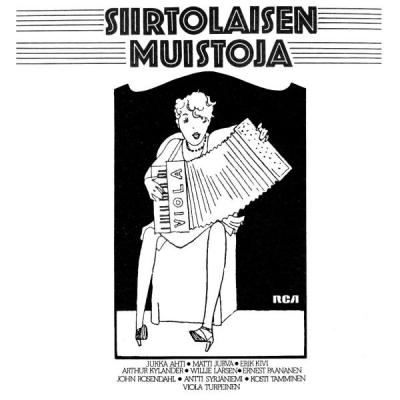
[1927/31]
Testo e musica / Lyrics and music / Paroles et musique / Sanat ja sävel:
Hiski Salomaa (Hiskias Möttö, Kangasniemi 17-5-1891 – New York 7-7-1957)
[Recorded 20.3.1929]
Between 1927 and 1931 Hiski Salomaa, who had immigrated to the USA in 1909, recorded 18 Finnish songs for Columbia Records. One of these was »Vapauden kaiho« which was originally commissioned from him by his labor union, the radical IWW (Industrial Workers of the World). Apart from one, all these recordings are available here.
In terms of linguistics, Salomaa's songs are interesting in two ways: he sings in a broad east Finnish accent (Savonian dialect) and his lyrics often - not in this case, though - contain words that are called Finglish, a term originated by Martti Nisonen, professor at the Suomi College in Hancock, Michigan, in the 1920's and referring to a mixture of English and Finnish common among Finnish... (continuer)
Testo e musica / Lyrics and music / Paroles et musique / Sanat ja sävel:
Hiski Salomaa (Hiskias Möttö, Kangasniemi 17-5-1891 – New York 7-7-1957)
[Recorded 20.3.1929]
Between 1927 and 1931 Hiski Salomaa, who had immigrated to the USA in 1909, recorded 18 Finnish songs for Columbia Records. One of these was »Vapauden kaiho« which was originally commissioned from him by his labor union, the radical IWW (Industrial Workers of the World). Apart from one, all these recordings are available here.
In terms of linguistics, Salomaa's songs are interesting in two ways: he sings in a broad east Finnish accent (Savonian dialect) and his lyrics often - not in this case, though - contain words that are called Finglish, a term originated by Martti Nisonen, professor at the Suomi College in Hancock, Michigan, in the 1920's and referring to a mixture of English and Finnish common among Finnish... (continuer)
Meill' vapauden kaiho soi
(continuer)
(continuer)
envoyé par Juha Rämö 26/3/2015 - 22:52
Riccardo Venturi, 6-1-2022 09:32
L'anelito alla libertà
(continuer)
(continuer)
×
![]()
- Confronter avec l'originale
- Confronter avec une autre version
- Chercher Vidéo sur YouTube
- Chansons reliées



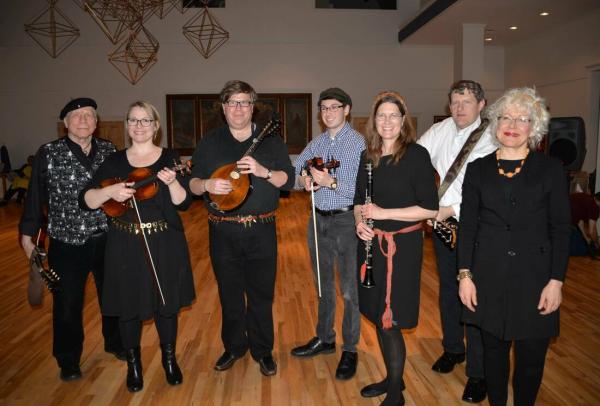

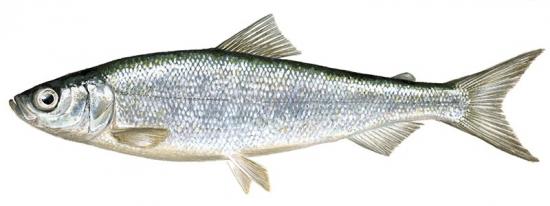

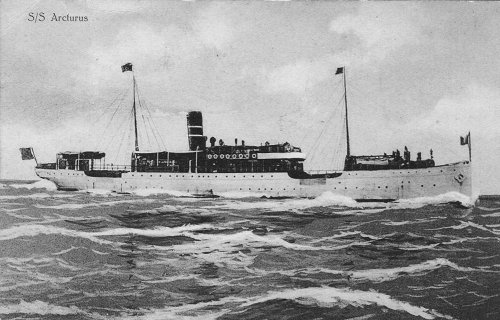
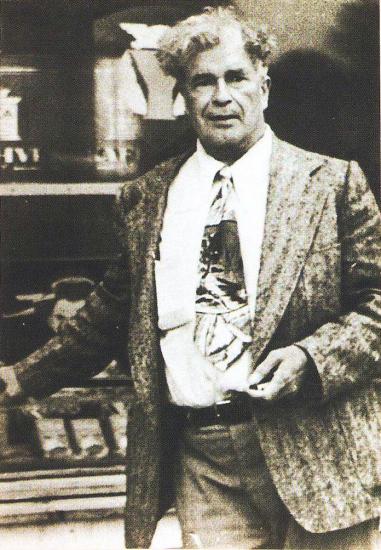
Recorded for Columbia Records in New York on June 1, 1930
Originally released in 1930
Logging was a common source of livelihood for many Finnish immigrants in North America. This song is a cheerful tribute to those early settlers, the »quiet Finns« who chose an uncertain, itinerant, and often dangerous way of life working as lumberjacks. This, however, is not how Salomaa depicts a logger's life. Instead, the song is all about a logger having a sweetheart wherever destiny takes him – which in real life was probably just a myth in most cases. Salomaa himself never worked as a logger. Instead, he made his living as a tailor and musician.